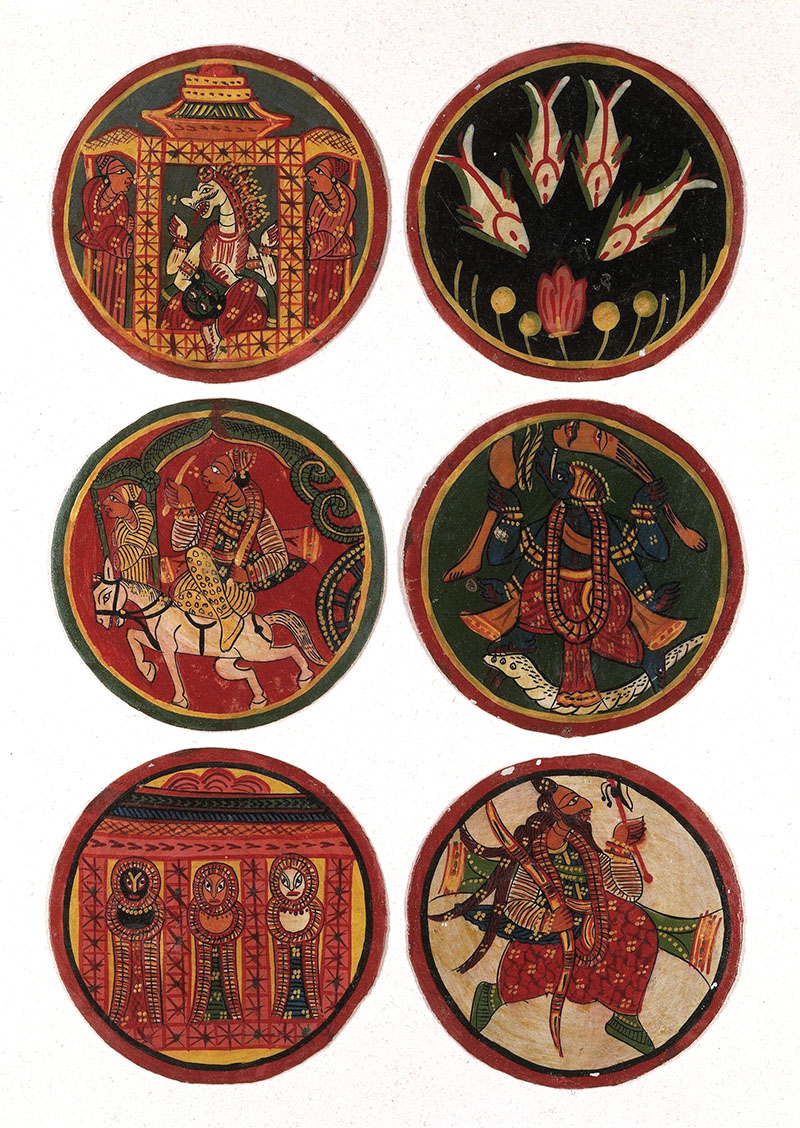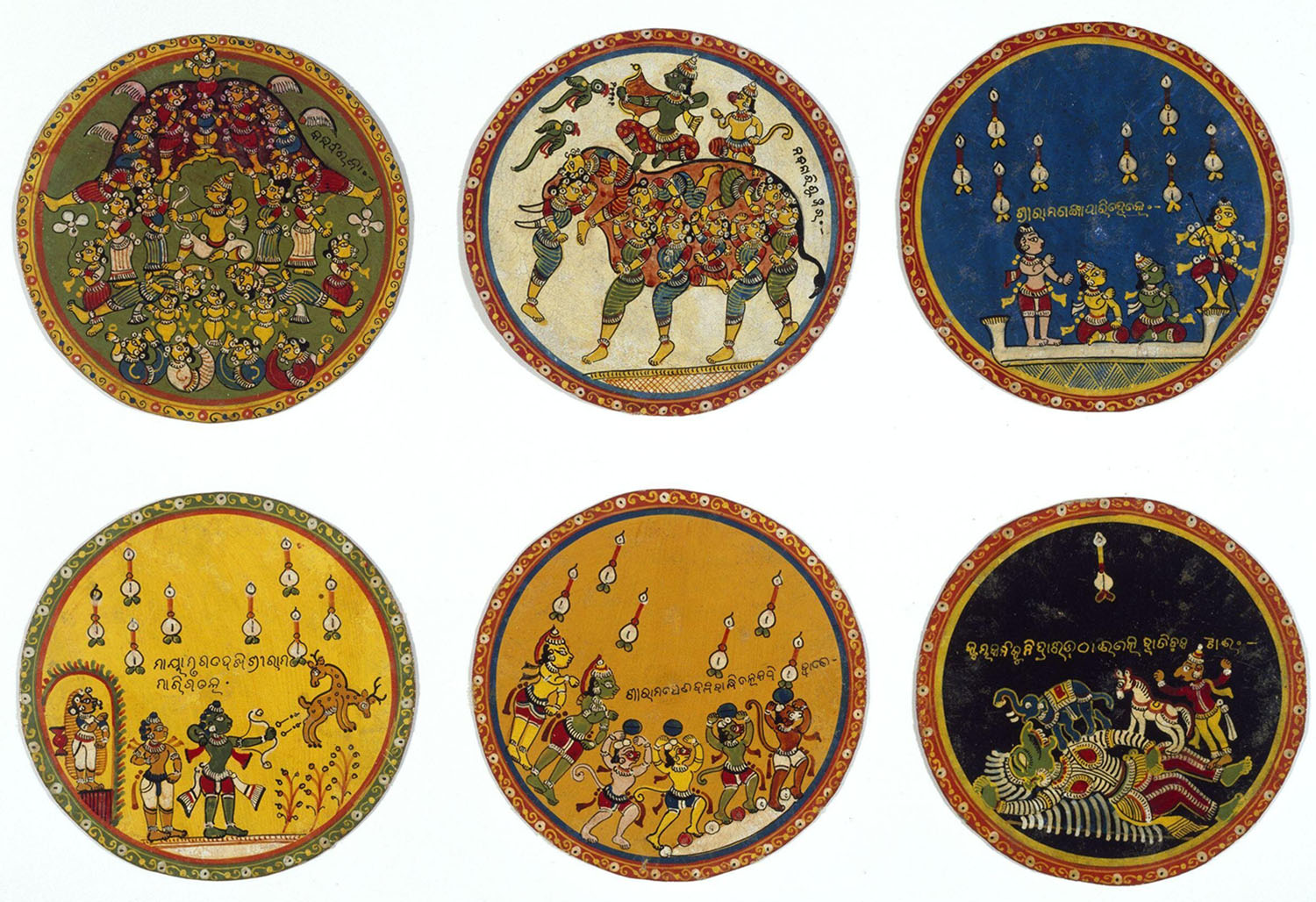An umbrella term for the different versions of Ganjifa found in Odisha, Ganjapa is often played at social gatherings or family events. It is especially common in the districts of Puri, Ganjam and Subarnapur. Traditionally, Ganjapa cards are made by Pattachitra artists from the Patua and Moharana communities. The designs of the cards derive from Hindu mythology, primarily the Ramayana and the Dashavatara stories, and may differ across versions.
Locally, versions of Ganjapa are referred to by the number of suits or colours (rangi), as each suit is usually given a unique colour to distinguish the cards at a glance. The local terms are charirangi, atharangi, dasarangi, vararangi, chaudarangi and solarangi for the four, eight, ten, twelve, fourteen and sixteen suit decks respectively. The number of suits itself depends on the version of Ganjifa that has been adopted locally. For instance, the four-suit game draws from Naqsh Ganjifa, the eight-suit version follows the original Mughal ganifa, the ten-suit game is modelled on Dashavatara Ganjifa and so forth.
Ganjapa cards are made by applying vegetable starch and quicklime to sheets of waste cotton cloth or by dipping the sheets in a tamarind paste. These are then cut into circles, layered together and allowed to dry. After that, the stiff circular cards are coated with chalk powder and painted in the bright colours and distinctive style of Pattachitra, usually by women artists. This process can take ten days to complete, while the more expensive, engraved wood decks may take even longer.Though Hindu mythology is the primary source of the visual appearance of Ganjapa cards, the structure of the decks and the gameplay remain those of the original Mughal game. In addition to the changes in visual imagery, there are also linguistic changes, as seen in the frequent substitution of the Mughal ghulam (vassal) suit with gulab (rose) in the Ganjapa version, with the suit sign changed accordingly. The decks based on the Mughal Ganjifa tend to vary significantly across the region due to the lack of a foundational iconography. The Dashavatara and Ramayana Ganjapas are, by comparison, relatively more standardised, although variations of these have been known to occur, especially in the commissioned decks. A standard deck of Dashavatara Ganjapa has Balaram and Jagannath as the eighth and ninth suits, and occasionally two additional suits for Ganesh and Kartikeya. Ramayana Ganjapa decks typically include twelve suits, however a more unique Ramayana deck from Parlakhemundi uses specific scenes from the epic for its suits, which number eight in total.









